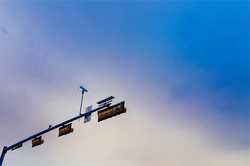
Growing evidence shows that red light cameras may increase the risk of motor vehicle accidents in urban areas. Previous claims suggested these cameras would reduce crashes and improve public safety, but evidence shows they simply rearrange traffic patterns, increasing non-angle collisions. Even so, these devices continue to be installed at intersections throughout the country.
The Fatal Flaws of Red Light Cameras
City councils and law enforcement agencies have argued for years that red light cameras would slow motorists down and discourage “red-light running.” However, red light cameras tend to make motorists more conscious of their actions; but, not in a good way. They encourage motorists to slam their brakes on yellow for fear of receiving a ticket if the light turns while they are in the intersection. This can increase the risk of the motorist getting rear-ended.
Red Light Cameras are Money Grabs
Over the past five years, numerous reports, including reports from Chicago, show that city officials have reduced the threshold for yellow lights to just three seconds. This resulted in a significant increase in revenues collected from red-light tickets. Indeed, the public views these cameras as revenue collectors for declining city budgets.
Red light cameras and lower yellow light thresholds also increased the number of accidents at intersections by 5%. Thus, the city’s cash grab came at a high price for motorists throughout the area who were caught between the choice of receiving a ticket or ending up in a crash. In some cases, motorists and their passengers experienced both outcomes. These negative outcomes have prompted many states including Ohio to place outright bans on the devices.
Defending Against Red Light Cameras in Auto Accidents
Red light tickets are not written in stone. Sometimes the camera doesn’t tell the whole truth. When a red light camera contributes to causing a motor vehicle accident, motorists can challenge the operation of the device and the accuracy of the information recorded. In Chicago, one of the most common problems is that the devices are miscalibrated. Many cameras also do not provide clear images, and most fail to show secondary factors such as the influence of pedestrians and other motorists who contributed to causing the crash.

